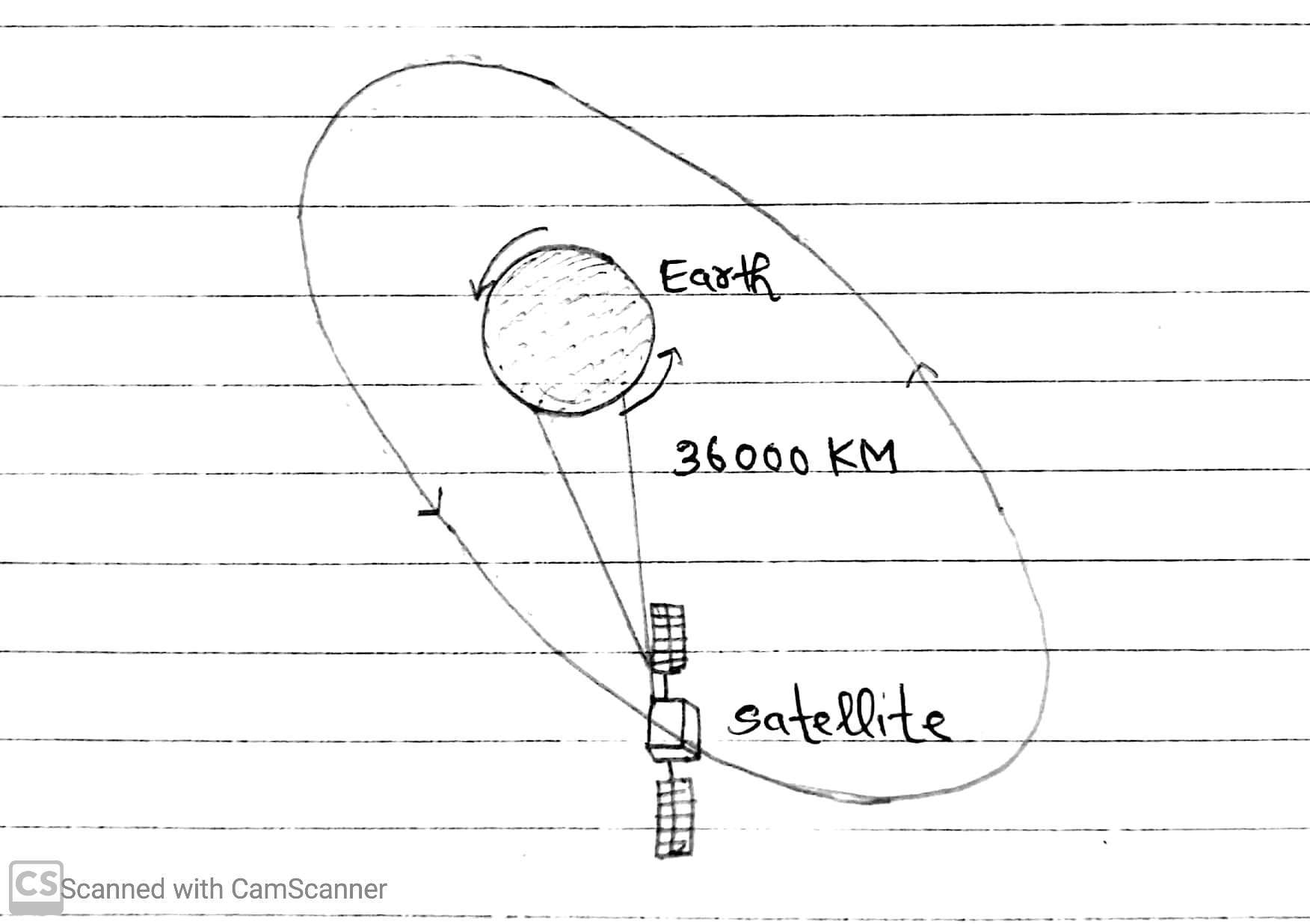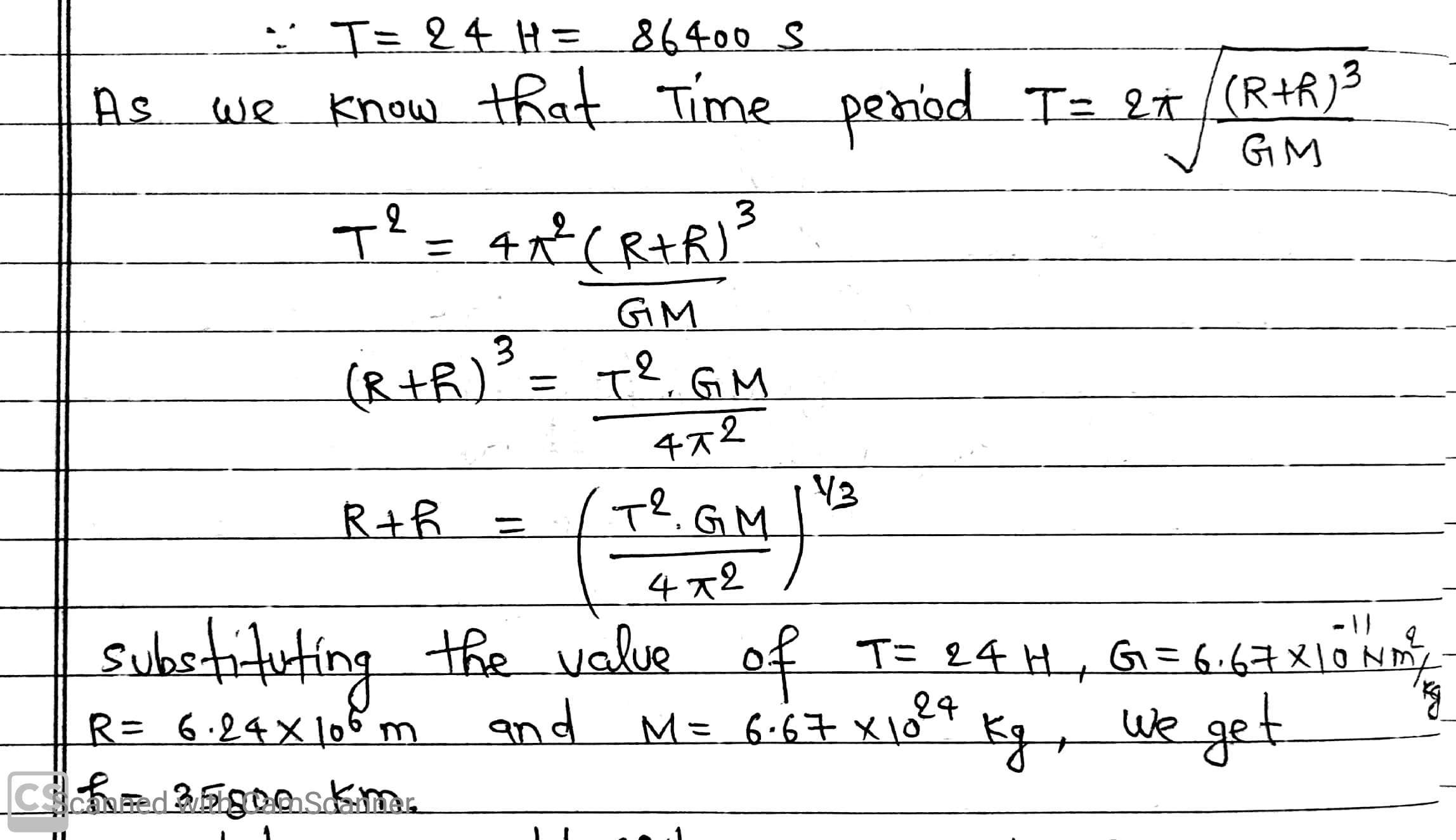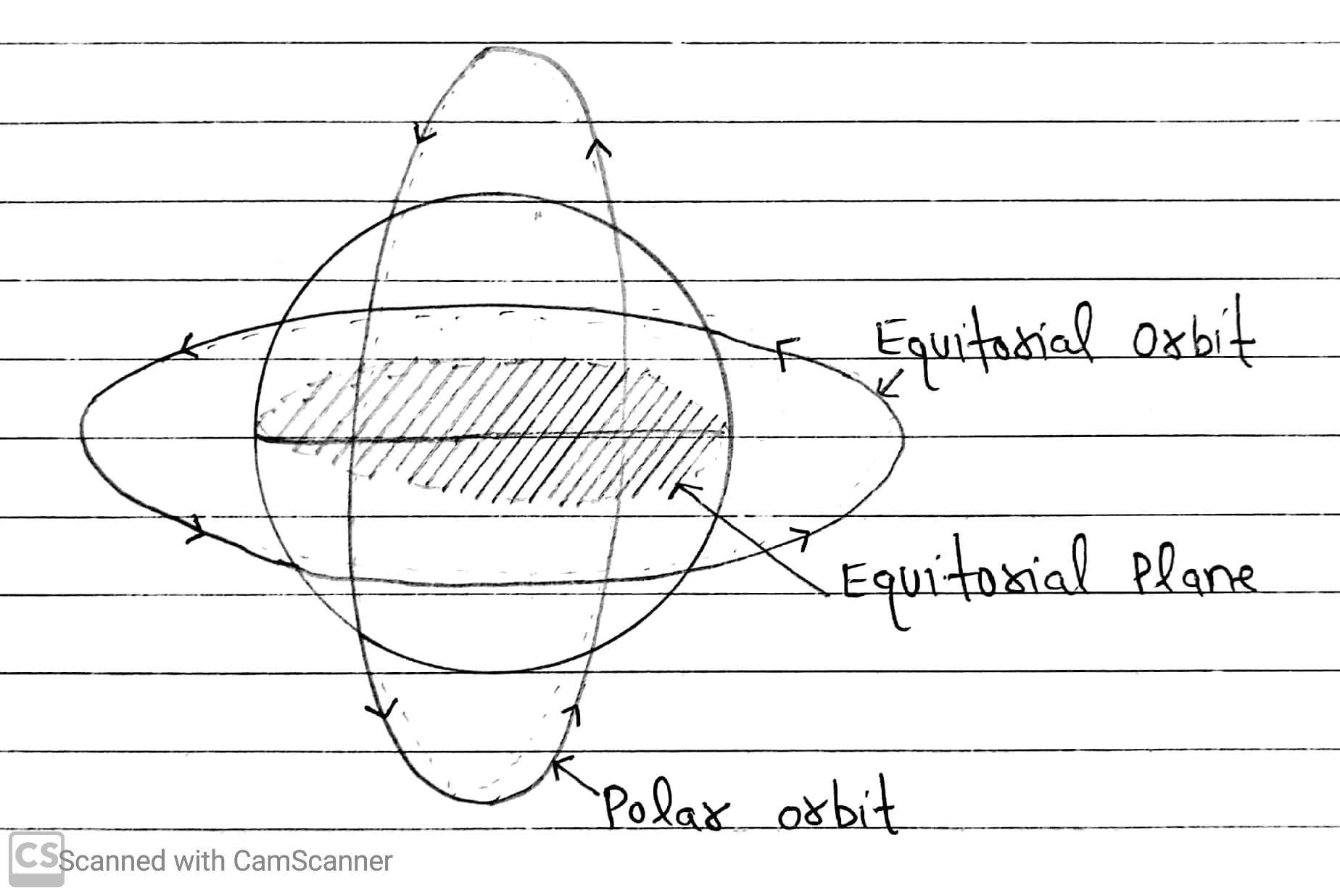1. Geostationary Satellite
The satellite in a circular orbits around the earth in the equatorial plane with T=24 hours are called geostationary satellite or Geosynchronous satellite.
These satellite always stay over the same place above the earth, such a satellite is never at rest and appears stationary due to its zero relative velocity with respect to that place on the earth.

The orbit of geostationary satellite is known as the parking orbit. It should revolve in an orbit concentric and coplanar with the equatorial plane. It’s sence of rotation should be same as that of the earth about its own axis i.e anti clock-wise direction from west to east. Its period of revolution around the earth should be same as that of the earth about its own axis.

Geostationary satellite are used for communication purpose such as electromagnetic wave, Radio wave are used for radio broadcast within the frequency range 2 MHz to 10 MHz. INSAT group satellite are example of such satellite.
2. Polar Or Synchronous Satellite
Polar satellite are low altitude satellite (h=500 to 800 KM) which circle to globe in a north south orbit passing over the North and South poles. These satellite revolve in polar orbit around the earth.
The time period of a polar satellite is approximately 100 minute. It crosses altitude many times in a day.

The area viewed by the camera of the polar satellite during one revolution of the satellite is narrow, but it has advantage of viewing the greater revolution. Informations gathered are extremely useful for remote sensing, metrology and environmental studies.
European SPOT and the IERS(Indian Earth resources satellite) are example of such satellite.
Uses Of Polar Satellites
(I) Used in spying work for military purpose.
(II) To know the exact shape and dimensions of the earth.
(III) To take astronomical observations in the absence of atmospheric disturbances.
(IV) To study topography of the Moon, the Venus and the Mars.
